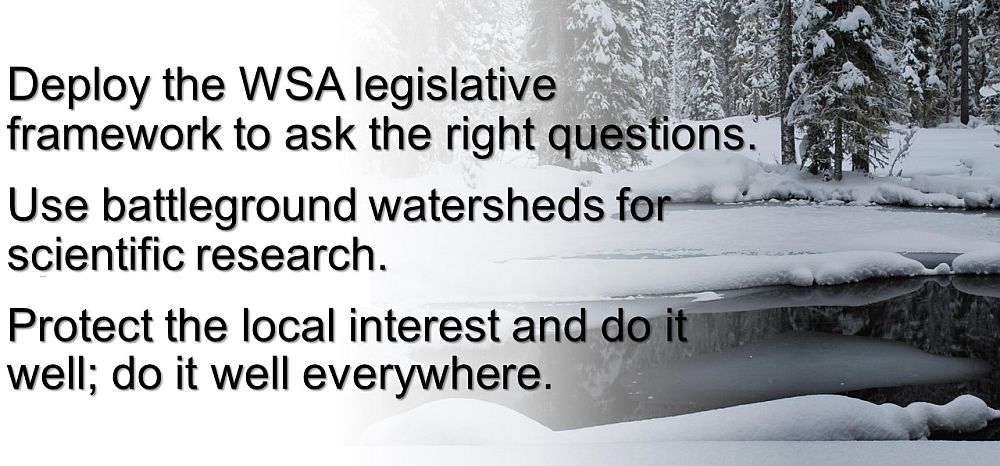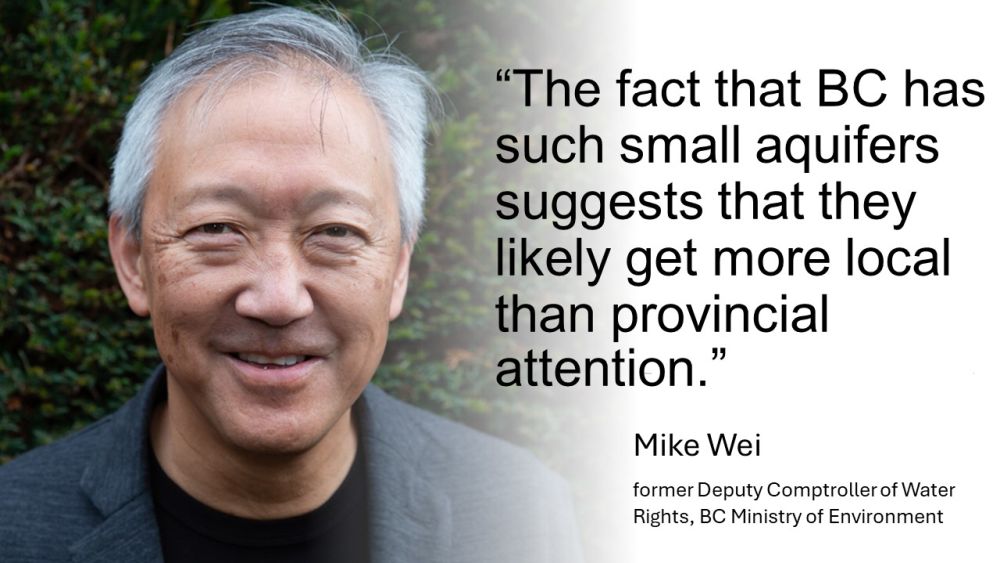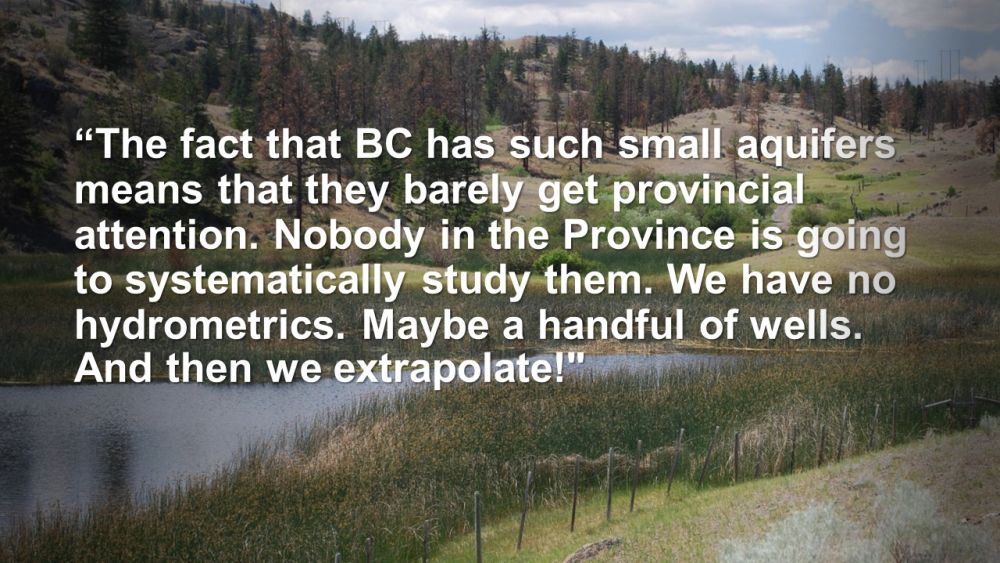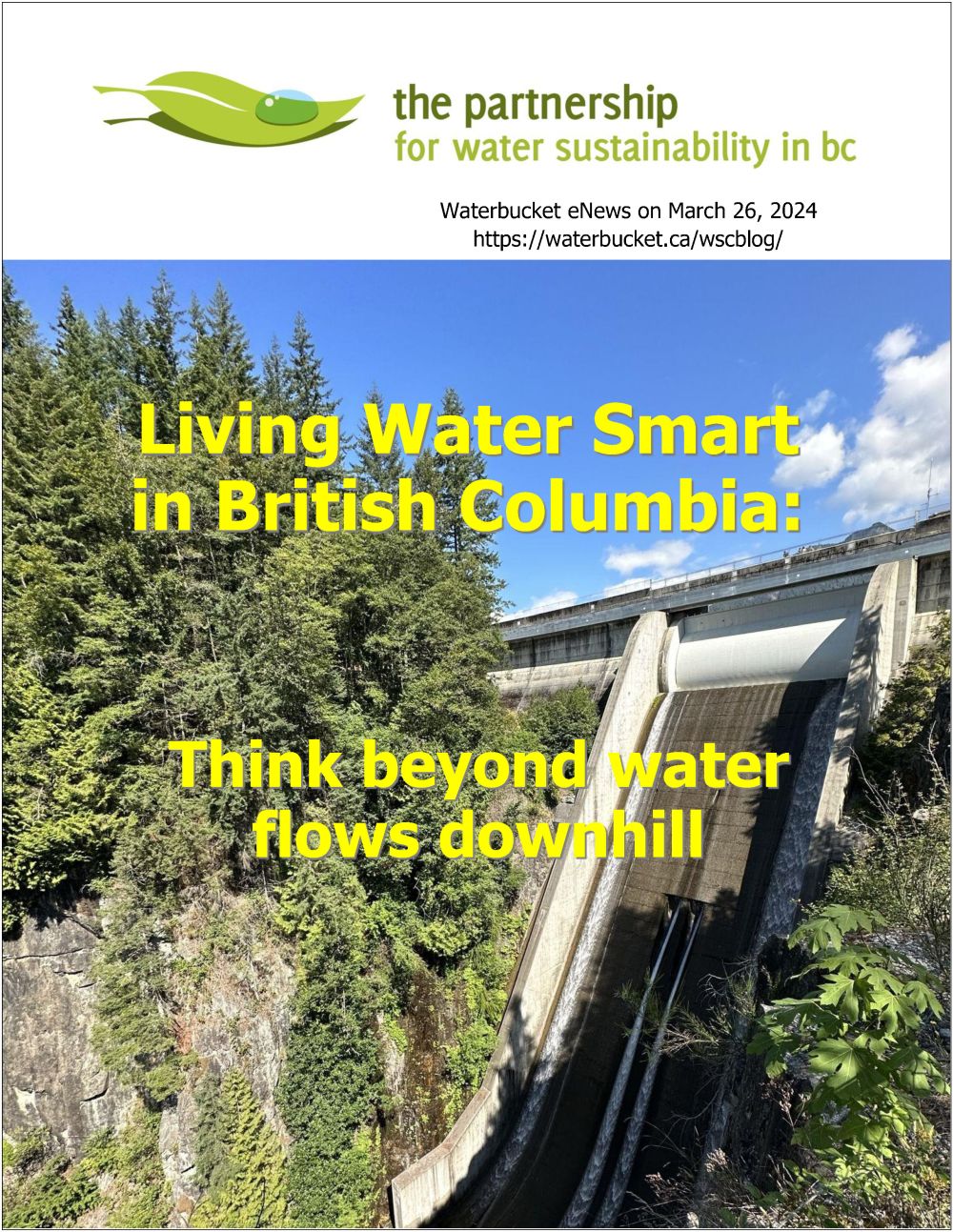PATH FORWARD FOR GROUNDWATER IN BRITISH COLUMBIA: “Unless it is legislated, it is not a priority for government,” states Mike Wei, former Deputy Comptroller of Water Rights
Note to Reader:
Published by the Partnership for Water Sustainability in British Columbia, Waterbucket eNews celebrates the leadership of individuals and organizations who are guided by the Living Water Smart vision. The edition published on March 26, 2024 featured Mike Wei, former Deputy Comptroller of Water Rights in British Columbia. An invitation to appear before a House of Commons Standing Committee gave Mike Wei a reason to step back, see things from afar, and describe what a path forward for groundwater management could look like in BC.

Path forward for groundwater in British Columbia
“Nominally the story is that Mike Wei went to Ottawa to talk about groundwater. But that is not the story behind the story. Mike Wei is passionate about water. He cares, he really cares about getting it right at a pivotal moment in British Columbia history,” stated Kim Stephens, Waterbucket eNews Editor and Partnership Executive Director.
“His meeting with the House of Commons committee created an opportunity for reflection by Mike Wei. It gave him a reason to step back, see things from afar, and describe what a path forward could look like. In the story behind the story, Mike Wei presents broad brush solutions in clear terms.”
“So, what is the path forward that Mike Wei suggests? Well, it has three elements that make sense to me.”

Unless it is legislated, it is not a priority
“In theory, few would argue against a science-forward approach to inform legislative design,” Mike Wei stated during our conversation.
“It is common knowledge that government-mandated commitments and legislation inform government budgets,” he continued. “Prior to the coming into force of the Water Sustainability Act in 2016, the BC government was less likely to prioritize and fund comprehensive groundwater studies.”
“The reason is that it had no legislated mandate to protect or manage that resource, especially as the BC government underwent budgetary constraints in response to the economic recession in the 1980s and political instability in the 1990s.”
“The lesson from BC is that the historical regulatory context cannot be ignored in regulatory design,” Mike Wei emphasized.

Protect the local interest and do it well; and do it well everywhere
“Going forward, any science that is done should involve the public. We need the mass of citizenry to understand that surface and groundwater are connected, and hydraulic connection and response are important concepts,” continued Mike Wei.
“Something that I have been thinking about a lot is that 1200-plus aquifers in BC have been mapped by the Province. If you were to pick the median size of an aquifer, it is 6.6 square kilometres. That is maybe twice the size of downtown Vancouver. This is tiny.”

Build partnerships that are top-down and bottom-up
“The importance of aquifers that are of limited extent needs to be viewed in a different way. Instead of comparing them to the immense size of BC, compare them within a more local context.”
“Because these aquifers of limited size are a priority for local communities and local governments, there is an opportunity for the Province to leverage this local interest and work with local governments and communities. It is about having an attitude that encourages forming local partnerships to deal with resources which are of limited size but equally as important as big ones,” concluded Mike Wei.
To Learn More:
To read the complete story, download a copy of Living Water Smart in British Columbia: Think beyond water flows downhill.
DOWNLOAD A COPY: https://waterbucket.ca/wcp/wp-content/uploads/sites/6/2024/03/PWSBC_Living-Water-Smart_Mike-Wei_think-beyond-water-flows-downhill_2024.pdf


